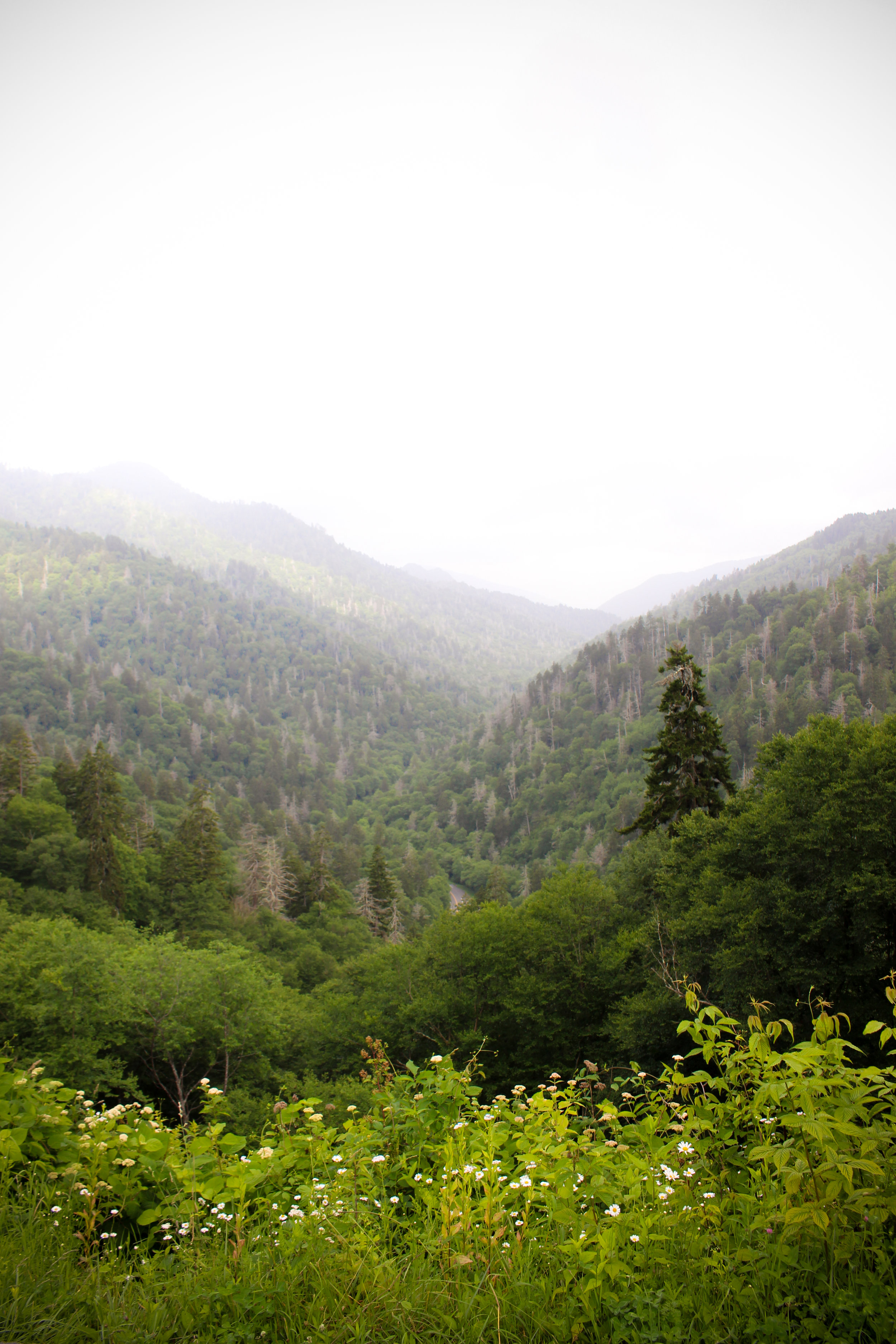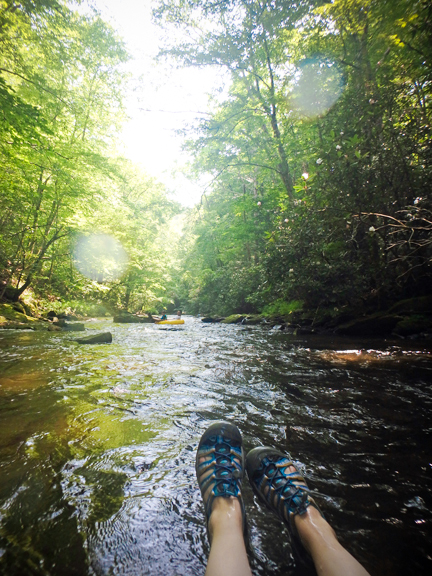It's a pretty rare thing for us to take a family vacation. We visit our families, we take day trips, we plan brief getaways with friends, but I cannot remember the last time we blocked out an entire week 8 months in advance without knowing what we were going to do. While I was filming videos in Colorado for Interweave last month, my husband and I hatched our vacation plan over email. Before I knew it, I was deciding which projects to bring with me, packing us up and like all knitters, wondering if I brought too much knitting or (horror!) too little.

Last week found us in new territory. While the husband drove the full 1400 miles roundtrip so I could happily knit and crochet away in the front seat and wrangle our son, we camped between 2 streams in Tennesee, watched fireflies outside our tent, I knit in a stream, we visited Dollywood and rode rollercoasters until I swear I could hear my ribcage rattling around, touched sting rays, walked through a shark tunnel, stayed in a cabin on the bank of another river in North Carolina, hiked the Smoky Mountains, ate some amazing food in Asheville, visited the Biltmore Estate, tubed down some rapids, visited a few knit shops and my most favorite thing of all - hiked deep into the woods and stumbled upon a ghost town.
I love old things, especially old things that somehow relate to American history. Maybe that's why I love knitting so much - the history that's flowing from our fingers as we stitch away is so calming and so global. While hiking and searching for an old graveyard that was on a random map we had where we were camping in Elkmont, Tennessee, we found ourselves in the middle of an abandoned village. Since we were in the land of no internet, we had to wait until we were back in civilization to do some research and see exactly where it was that we had gone back in time to.
According to Wikipedia, "In his company's early days, Wilson Townsend allowed hunters and fishermen to use the Little River Railroad to access the deep, game-rich forests of the Smokies. As the Elkmont valley was slowly stripped of its valuable timber, Townsend began to advertise the area as a mountain getaway. In 1909, Little River Railroad began offering the Sunday "Elkmont Special"— non-stop train service from Knoxville to Elkmont. In 1910, an affluent group of Knoxville hunting and fishing enthusiasts formed the Appalachian Club and purchased what is now "Daisy Town" south of the confluence of Little River and Jakes Creek. They built the Appalachian Clubhouse for use as a lodge. Within a few years, several clubmembers built cottages, and the club evolved into a mountain getaway for Knoxville's elite. In 1920, Willis P. Davis and his wife Anne, who owned a summer cottage at Elkmont, began to suggest an idea for a national park in the Smokies after a visit to Yellowstone. Business owners in Knoxville quickly saw the benefits of a national park and began lobbying federal and state governments."
While the history itself was very interesting, we were more interested in what exactly had happened afterwards... Why were the original 19 cottages from "Daisy Town" that we stumbled upon still (barely) standing, abandoned and overgrown? Why hadn't they been repaired or torn down, letting the land be reclaimed by nature? After more searching, we found, "Most of the lifetime leases on the Wonderland Hotel and the rustic cottages at Elkmont expired in 1992 (two expired in 2001), and ownership reverted to the National Park Service. The park's 1982 General Management Plan calls for all structures to be removed to allow nature to reclaim the affected areas. However, in 1994, the Wonderland Hotel and several of the rustic cottages were placed on the National Register of Historic Places, giving them a special status. A debate immediately ensued over the fate of these structures. In 2005, the Wonderland Hotel collapsed from a structural failure. Parts of the hotel deemed to have historical value were removed and the rest cleared, leaving only the annex and a chimney fall. In its 2009 Final Environmental Impact Statement for Elkmont, the National Park Service announced plans to restore the Appalachian Clubhouse and eighteen cabins in the Appalachian Club section. The remaining structures will be carefully documented and removed. Seventeen of the nineteen structures chosen for restoration and preservation are located in the Appalachian Club's "Daisy Town" section. These were selected primarily as the oldest and most historically notable structures in the historic district. Most of the cottages were built between 1910 and 1930, and renovated numerous times over subsequent decades."
While walking through this silent "town" in the middle of a giant forest with my son and husband, I could imagine people knitting and crocheting on their front porches, laughter and birds chirping, watching children running down the street or like I had a few days prior, wondering if they brought enough knitting to get them through their trip. Life was different back then - of course - but again, our knitting history runs so deep and so far into the past that it wasn't a great stretch of my imagination to picture people happily knitting away on a bright summer's day, their cottages intact and new. There was something very odd about those houses in the woods to me. I felt like I belonged there and had a weird sense of deja vu the whole time we walked quietly through. Since the structures were unstable with "no trespassing" signs posted everywhere, we walked, touching nothing, anxious to find out more about this place.
Our trip inspired many a future knitting project, color combinations to reenact in the form of Fair Isle (so much GREEN!), a renewed sense of pride and love for what I do and sparked my sense of adventure which had lay dormant for far too long. I learned so much on this trip and it was wonderful visiting so many places I had never been. But the best part? These two guys here, reconnecting as a family and appreciating what we have.
Stay tuned for some summer vacation-inspired knitting patterns coming your way soon!






